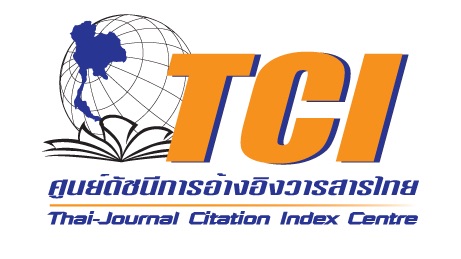Nursing Assistants’ Perspectives on Their Job Characteristics, Workload, and Wage: A Case Study of a Private Hospital in Bangkok
Keywords:
Bangkok, Nursing Assistants, Job Characteristics, Wage, Private HospitalAbstract
The objectives of this study were to 1) to study the rationales of female nursing assistants at a private hospital in Bangkok for choosing to work in low-paid nursing assistant jobs 2) to study their rationales for remaining in their current jobs for several years and 3) to find out their future plans in the next 5 years. This research adopted semi-structured interviews with 20 nursing assistants from the outpatient departments of the diabetes center and the medical check-up center. The research findings showed that a majority of nursing assistants chose to work in nursing assistant jobs mainly due to the financial constraints of their parents. Moreover, the institutional constraints from the Thai education system obstructed them to obtain bachelor’s degrees from public universities. As a result of these constraints, they ended up studying a six-month nursing assistant course which was low human capital investment. Additionally, a majority of nursing assistants remained in their current jobs mainly due to their financial constraints. Other rationales were overtime pay, job stability from annual salary increases, social satisfaction in the workplace, hospital fringe benefits and career development. Regarding their future plans in the next five years, some of the nursing assistants wanted to become licensed practical nurses while those with children wanted to move back to their hometowns to look after their children and parents and wanted to run small businesses such as a grocery shop and a restaurant.
References
Anker, R. (1998). Gender and Jobs: Sex Segregation of Occupations in the World. International Labor Organization.
Aoki, M., Keiwkarnka, B., & Chompikul, J. (2011). Job Stress among Nurses in Public Hospitals in Ratchaburi Province, Thailand. Journal of Public Health and Development, 9(1), 19-27.
Asian Development Bank. (2020). Country Diagnostic Study on Long-Term Care in Thailand. ADB Publications.
Bangkok Inter Care School. (2021, May 1). Nursing Assistant Program. https://www.bkk-intercare.com
Barnett, R.C., & Gareis, K.C. (2002). Full-time and reduced-hour work schedules and marital quality. Work and Occupations, 29(3), 364- 379. http://doi:10.1177/0730888402029003005.
Boonyoung, N. (2010). Nursing Strategic Planning. Thai Journal of Nursing Council, 25(2), 18-26.
Bryman, A. (2001). Social Research Methods. Oxford University Press.
Bryman, A. (2012). Social Research Methods (4th ed.). Oxford: University Press.
Cresswell, J. (2007). Qualitative Inquiry and Research Design: Choosing among Five Approaches. SAGE.
Crompton, R., & Harris, F. (1998). Explaining women’s employment patterns: ‘orientations to work’ revisited. The British Journal of Sociology, 49(1), 118-136. http://doi:10.2307/591266.
Denscombe, M. (2010). The Good Research Guide for Small-Scale Social Research Projects (4th ed.). McGraw Hill.
Dex, S., & Joshi, H. (1999). Careers and motherhood: Policies for compatibility. Cambridge Journal of Economics, 23(5), 641-659. http://doi:10.1093/cje/23.5.641.
Fagan, C., & Burchell, B. (2002). Gender, Jobs and Working Conditions in the European Union. Dublin: European Foundation for the Improvement of Living and Working Conditions.
Gillham, B. (2000). Case Study Research Methods. Continuum.
Glover, J. (2002). The “Balance Model”: Theorising Women’s Employment Behavior. In: Carling, A., Duncan, S. & Edwards, R., eds. Analysing Families: Morality and Rationality in Policy and Practice. Routledge, Ch. 13.
Gregory, A., & Milner, S. (2009). Editorial: work-life balance: A matter of choice? Gender, Work and Organization, 16(1), 1-13. http://doi:10.1111/j.1468-0432.2008.00429.x.
Gregory, A., & Windebank, J. (2000). Women’s Work in Britain and France: Practice, Theory and Policy. Macmillan Press Limited.
Hakim, C. (1991). Grateful slaves and self-made women: Fact and fantasy in women’s work orientations. European Sociological Review, 7(2), 101-121. http://doi:10.1093/oxfordjournals.esr.a036590.
Hakim, C. (1995). Five feminist myths about women’s employment. The British Journal of Sociology, 46(3), 429-455. http://doi:10.2307/591850.
Hakim, C.(1996). Key Issues in Women’s Work: Female Heterogeneity and the Polarization of Women’s Employment. Athlone Press Limited.
Hakim, C. (2000). Work-Lifestyle Choices in the 21st Century: Preference Theory. Oxford University Press.
Jonung, C. (1998). Occupational Segregation by Sex and Change over Time. In: Persson, I. and Jonung, C., eds. Women’s Work and Wages. Routledge, Ch.2.
Kemp, A. (1994). Women’s Work: Degraded and Devalued. New Jersey: Prentice Hall.
Khorpetch, C., & Kulkolkarn, K. (2011). Gender Wage Discrimination in the Thai Labor Market. Applied Economics Journal, 18(2), 17-31.
Kim, M. (2000). Women paid low wages: Who they are and where they work. Monthly Labor Review, 123(9), 26-30. http://doi:10.2307/41845234.
Kirton, G., & Greene, A. (2005). The Dynamics of Managing Diversity: A Critical Approach (2nd ed.). Oxford and Burlington: Elsevier Butterworth-Heinemann.
Marshall, C., & Rossman, G. (1995). Designing Qualitative Research. SAGE.
May, T. (1997). Social Research: Issues, Methods and Process. Open University Press.
Mayo, A. (2016). Human Resources or Human Capital: Managing People as Assets. Routledge.
Olaniyan, D.A., & Okemakinde, T. (2008, June 1). Human Capital Theory: Implications for Educational Development. European Journal of Scientific Research, 24(2), 157-162. http://medwelljournals.com/abstract/?doi=pjssci.2008.479.483
Patton, M.Q. (2002). Qualitative Research and Evaluation Methods(3rd ed.). SAGE.
Presser, H.B. (1994). Employment schedules among dual-earner spouses and the division of household labor by gender. American Sociological Review, 59(3), 348-364. http://doi:10.2307/2095938.
Pujol, M. (1995). Into the Margin. In: Sap, K., Sap, J., Feiner, S., Ott, N. and Tzannatos, Z., eds. Out of the Margin: Feminist Perspectives on Economics. Routledge, Ch.1.
Rubin, H., & Rubin, I. (2005). Qualitative Interviewing: The Art of Hearing Data (2nd ed.). SAGE.
Thi Bui, M., & Permpoonwiwat, C. (2015). Gender wage inequality in Thailand: A sectoral perspective. International Journal of Behavioral Science, 10(2), 19-36. http://doi:10.14456/ijbs.2015.40
Warren, T., Fox, E., & Pascall, G. (2009). Innovative social policies: Implications for work-life balance among low-waged women in England. Gender, Work and Organization, 16(1), 126-150. http://doi:10.1111/j.1468-0432.2008.00433.x.
Warren, T., & Walters, P. (1998). Appraising a dichotomy: A review of ‘part- time/fulltime’ in the study of women’s employment in Britain. Gender, Work and Organization, 5(2), 102-118. http://doi:10.1111/1468-0432.00049.
Xiao, J. (2001). Determinants of Salary Growth in Shenzhen, China: An Analysis of Formal Education, On-the-Job Training, and Adult Education with a Three-Level Model. The Chinese University of Hong Kong, Faculty of Education.
Downloads
Published
How to Cite
Issue
Section
License

This work is licensed under a Creative Commons Attribution-NonCommercial-NoDerivatives 4.0 International License.







